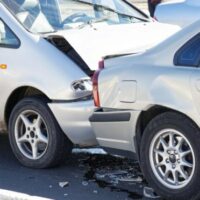How Is Rear End Collision Fault Determined in New Hampshire?

Rear end collisions can result in severe injuries, and the damages can be devastating. Your vehicle might be ruined, especially if you’re pinned between the car that hit you and a car in front of you in a “ripple” accident. The damage can even propagate to other vehicles ahead of you in heavy traffic. But how is rear end collision fault determined?
Is the Guy in Back Always to Blame?
In some states, investigators always assign rear end collision fault to the person who hit the other driver. New Hampshire is not one of those states. Admittedly, rear end collisions most often do often result from the following driver not being alert, following too closely, or otherwise failing to stop in time. However, that’s not always the case — and New Hampshire law recognizes that reality.
For example, a rear-end accident could be caused by the leading driver pulling out unexpectedly in front of another car, changing lanes into the path of another car, or driving without taillights at night.
Can You Recover Damages in a Rear End Collision?
Whether you were the person who did the rear ending or the person struck, you may be able to get compensation for your damages in a rear end collision. The accident investigators will apportion the blame for the accident between the drivers. If you’re 51% or less to blame, you can make a claim for damages against the other person’s insurance.
If you were rear ended, it’s easier to make a case. You do have to produce evidence that you were exercising due care when the accident occurred, while the other person was not. Documentation to prove the other driver’s liability could include:
- a police report,
- notes and photos from the scene,
- photos of the auto damage,
- witness statements, and
- medical bills and records.
If you rear ended someone else, you may be able to prove that one of the circumstances mentioned in the previous section caused you to strike the other vehicle. However, if you are found to be more than 51% to blame, you won’t have a case.
What Happens If You Decide to Make a Claim Against the Other Driver?
If you decide to sue for damages, we strongly recommend that you hire an experienced Manchester NH injury lawyer to represent you in court. As part of their due diligence, they’ll advise you on the types of damages to consider while making your case.
You can expect vehicle damage from a rear end collision, and it may be significant. This is the most obvious type of damage to consider, along with any injuries. Don’t forget to take photos of both your auto damage or personal injuries to you or your passengers for use in court.
When you make the claim, remember also to take lost wages into account, and any potential long-term harm. If you end up with a hurt neck or back, it may result in years of pain. Include those potential costs in your medical expenses, as a step toward making you legally whole. This is especially true if the injury will likely impact your ability to earn future income.
You can also request compensation for pain and suffering, mental anguish, and even punitive damages, though the latter are rarely awarded. Needless to say, you’ll need the documentation to back up any and all claims.
To Learn More About How to Determine Rear End Collision Fault
At the Law Office of Manning Zimmerman & Oliveira PLLC, we pride ourselves on our experience, client service, and professionalism. If you have questions about a rear end collision fault, contact us for a free consultation at 603-624-7200.

